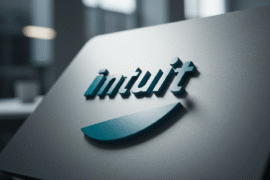This article may contain references to products or services from one or more of our advertisers or partners. We may receive compensation when you click on links to those products or services. Nonetheless, our opinions are our own.
Introduction
In today’s digital age, the concept of money is rapidly evolving. Traditional currencies are being challenged by digital alternatives, with stablecoins emerging as a promising new form of digital currency. Unlike volatile cryptocurrencies like Bitcoin and Ethereum, stablecoins are designed to maintain a stable value, making them more suitable for everyday transactions. In addition, if you are looking for a website that helps people learn about investments by connecting them with investment education companies that can help them receive the right information, you may visit Immediate Maxair 360.
The Rise of Stablecoins
Stablecoins are digital currencies that are pegged to a stable asset, such as a fiat currency like the US dollar or a commodity like gold. This pegging mechanism helps stabilize the value of stablecoins, making them less susceptible to the price volatility that often plagues traditional cryptocurrencies. As a result, stablecoins offer a more reliable store of value and a more predictable medium of exchange.
One of the most popular stablecoins is Tether (USDT), which is pegged to the US dollar on a 1:1 basis. Other stablecoins, such as USD Coin (USDC) and Dai, are also pegged to the US dollar. In recent years, stablecoins have gained significant traction, with their total market capitalization surpassing $100 billion.
Benefits of Stablecoins
Stability is the most obvious benefit of stablecoins. Unlike traditional cryptocurrencies, which can experience significant price fluctuations, stablecoins maintain a stable value, making them more suitable for use as a medium of exchange. This stability makes stablecoins an attractive option for everyday transactions, such as buying goods and services or sending money to friends and family.
Another benefit of stablecoins is their accessibility. Stablecoins can be easily transferred and used for transactions anywhere in the world, making them ideal for cross-border payments and remittances. Additionally, stablecoins offer improved security and privacy features compared to traditional payment methods, making them a more secure option for conducting financial transactions online.
Use Cases of Stablecoins
Stablecoins have a wide range of use cases, thanks to their stability and accessibility. One of the most common use cases for stablecoins is cross-border payments. Traditional cross-border payments can be slow and expensive, with high fees and long processing times. Stablecoins offer a faster and more cost-effective alternative, enabling individuals and businesses to send money across borders quickly and cheaply.
Remittances are another key use case for stablecoins. Many people around the world rely on remittances from family members working abroad to support themselves. However, traditional remittance services can be costly, with fees often exceeding 10% of the transaction amount. Stablecoins offer a cheaper alternative, with fees typically ranging from 1% to 3%.
Micropayments are also an emerging use case for stablecoins. Traditional payment methods are often ill-suited for micropayments, as the fees associated with these transactions can exceed the value of the payment itself. Stablecoins offer a cost-effective solution for micropayments, enabling new forms of digital content monetization and microtransactions.
Challenges and Risks
While stablecoins offer many benefits, they also face several challenges and risks. One of the main challenges facing stablecoins is regulatory uncertainty. Regulators around the world are still grappling with how to classify and regulate stablecoins, leading to uncertainty in the market.
Centralization is another concern associated with stablecoins. Some stablecoins are issued and controlled by a single entity, raising questions about their decentralization and resilience to censorship and control.
Security is also a major risk with stablecoins. Like all digital assets, stablecoins are vulnerable to hacking and other security breaches. Several high-profile hacks have occurred in recent years, highlighting the need for robust security measures to protect stablecoin holders.
The Future of Stablecoins
Despite these challenges, the future looks bright for stablecoins. Adoption of stablecoins is expected to continue to grow, driven by increasing demand for fast, low-cost, and borderless payments. Stablecoins are also being integrated into decentralized finance (DeFi) applications, further fueling their growth.
Central banks are also exploring the possibility of issuing their own digital currencies, known as central bank digital currencies (CBDCs). While CBDCs are not stablecoins in the traditional sense, they share some similarities, such as being digital representations of fiat currency. The development of CBDCs could further accelerate the adoption of stablecoins and digital currencies more broadly.
Conclusion
In conclusion, stablecoins are reshaping the future of money and finance. Their stability, accessibility, and versatility make them an attractive alternative to traditional currencies and cryptocurrencies alike. While they face challenges and risks, the potential benefits of stablecoins are significant, offering a glimpse into the future of a more efficient, inclusive, and secure financial system.

Reviewed and edited by Albert Fang.
See a typo or want to suggest an edit/revision to the content? Use the contact us form to provide feedback.
At FangWallet, we value editorial integrity and open collaboration in curating quality content for readers to enjoy. Much appreciated for the assist.
Did you like our article and find it insightful? We encourage sharing the article link with family and friends to benefit as well - better yet, sharing on social media. Thank you for the support! 🍉
Article Title: The Future of Money: How Stablecoins Are Reshaping Finance
https://fangwallet.com/2024/05/28/the-future-of-money-how-stablecoins-are-reshaping-finance/The FangWallet Promise
FangWallet is an editorially independent resource - founded on breaking down challenging financial concepts for anyone to understand since 2014. While we adhere to editorial integrity, note that this post may contain references to products from our partners.
The FangWallet promise is always to have your best interest in mind and be transparent and honest about the financial picture.
Become an Insider

Subscribe to get a free daily budget planner printable to help get your money on track!
Make passive money the right way. No spam.
Editorial Disclaimer: The editorial content on this page is not provided by any of the companies mentioned. The opinions expressed here are the author's alone.
The content of this website is for informational purposes only and does not represent investment advice, or an offer or solicitation to buy or sell any security, investment, or product. Investors are encouraged to do their own due diligence, and, if necessary, consult professional advising before making any investment decisions. Investing involves a high degree of risk, and financial losses may occur including the potential loss of principal.
Source Citation References:
+ Inspo










































